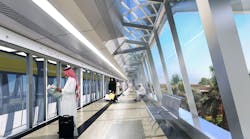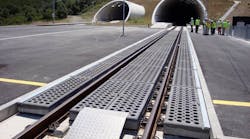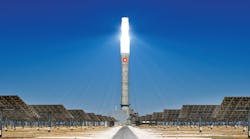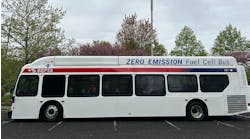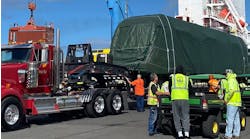Sener attended the unveiling of the South section of Barcelona metro line 9, which took place during the morning of Feb. 12. Guests included the president of the Catalonia Government, Carles Puigdemont, and other representatives of public institutions.
The new line section connects the following municipalities of the metropolitan area: Barcelona, L’Hospitalet and El Prat de Llobregat. This addresses the demand from different urban areas which, until now, lacked a public transport railway connection. The newly opened section connects the two airport terminals, the exhibition sites, industrial areas, residential areas and the city centre (15 stations and a depot situates in Zona Franca). Many passengers are currently using line 9, the first section of which was launched in December 2009.
Sener played a key role in line 9, being responsible for providing technical assistance for the integration of all infrastructure and systems, and participating in the Project and Construction Management of systems, stations and civil works. The project was one of notable technical complexity, its 52 stations and total length of 47.8 km making it thelargest automated line in Europe and one of the most modern in the world.
In this regard, the director of Sener in Catalonia, Òscar Julià, highligted “the excellent work of the Sener team, as they were not only responsible for defining and supervising the technical functionalities, managing the integration of interfaces and providing assistance during the operation of the line, but also delivered an exhaustive global risk analysis. In it, Sener defined, distributed and assigned the safety requirements for each of the subsystems, making Barcelona metro’s line 9 one of the safest on the continent.”
The longest driverless line in Europe
Barcelona metro’s line 9 runs as a driverless Unattended Train Operation (UTO), allowing trains to circulate autonomously. This offers users a service with greater safety, regularity and availability, and there is more flexibility to bring supply into line with demand, since trains are added or removed automatically, in accordance with transport requirements.
This automation also offers high levels of safety: all platforms have panels preventing access to the tracks, fitted with doors that open in sync with the opening of the train doors to give access to the cars. The closing-off of the platforms offers other advantages, such as better temperature control and soundproofing of the platforms. Furthermore, the stations have large-capacity elevators.
The signaling system is automatic and wireless, as it is the video transmission system installed in the trains, which gives the control center a real-time view of the cars and the track. The entire line operation is managed from a central control center, where qualified personnel supervise the trains’ movements. There is also a second emergency control center capable of taking over operations if the main control center fails.
Continuous communication is maintained between the control center and the trains to regulate intervals and timetables. At the same time, other telecommunication systems keep passengers informed and supervise security by means of video surveillance cameras, telephone, intercom and megaphone systems. These also allow continuous communication between the controllers, as well as access to the emergency services. These systems are organized through two independent data networks that converge onto one IP data platform.
There are manifold subsystems that in conjunction underlie the functioning of the metro. Their integration, which was the responsibility of Sener, is critical to guarantee the efficiency of the installations. In point of fact, the launch of line 9 sets new standards in the design and construction of metro systems, making Barcelona a global example for urban transport.
